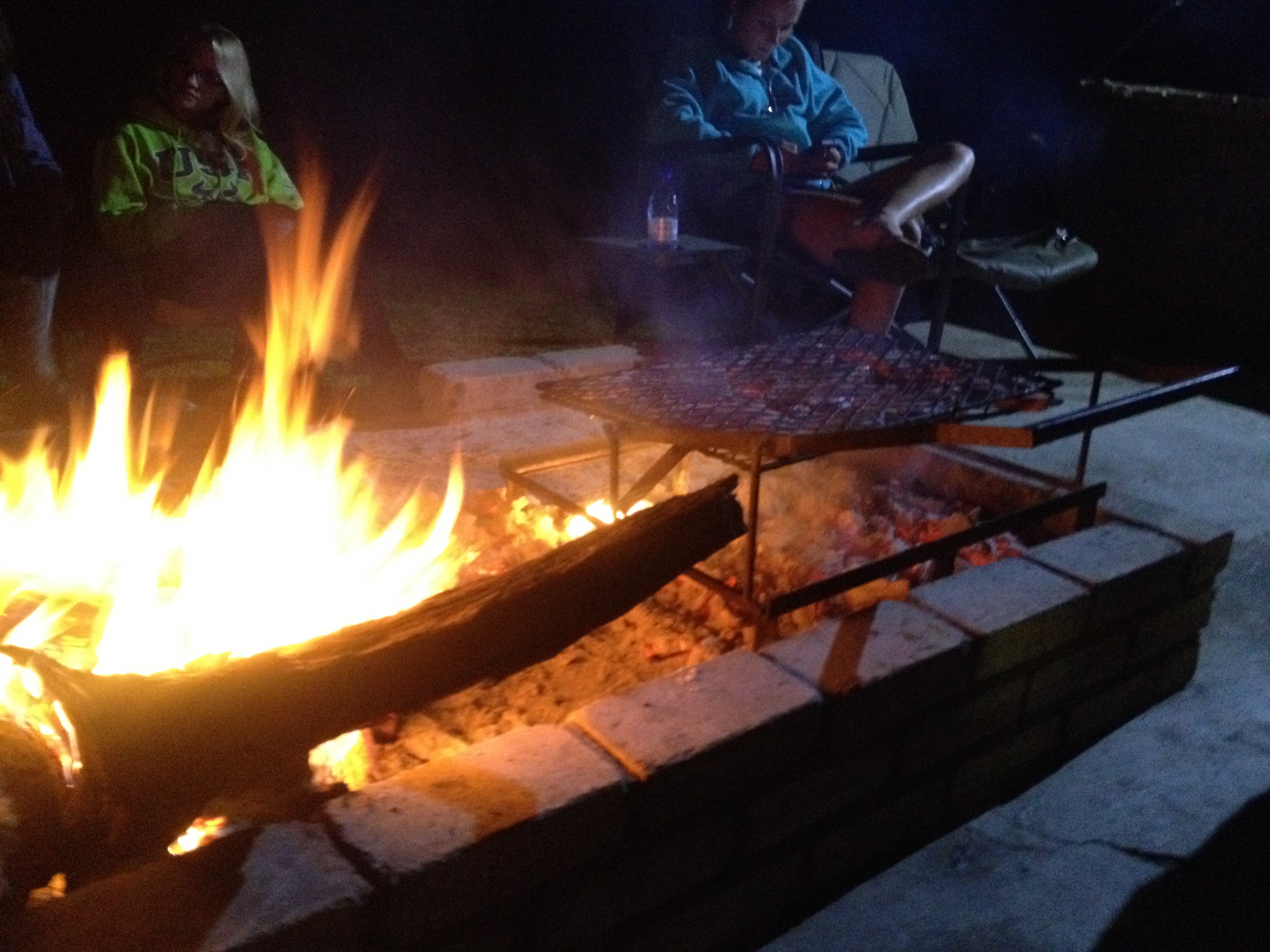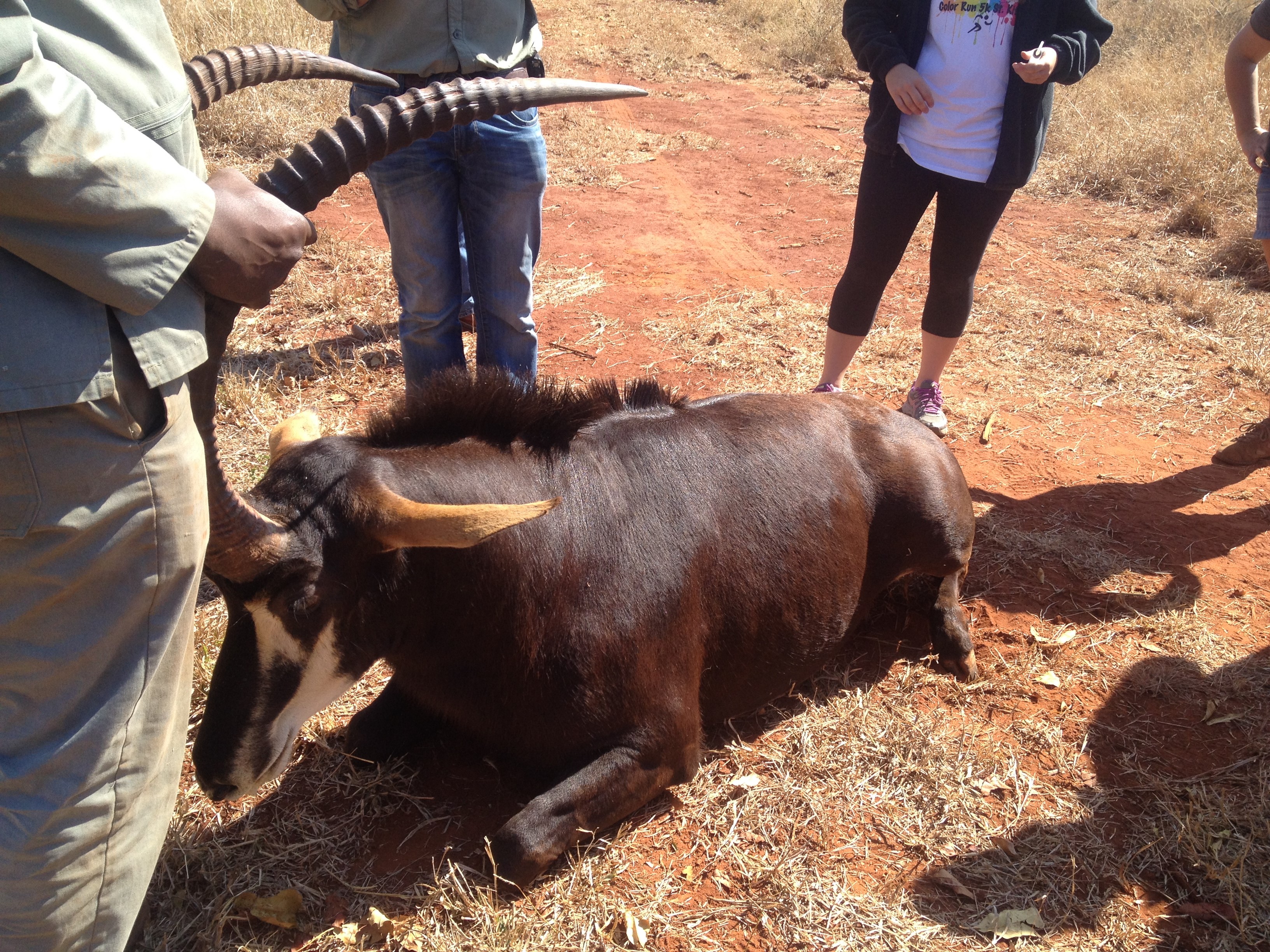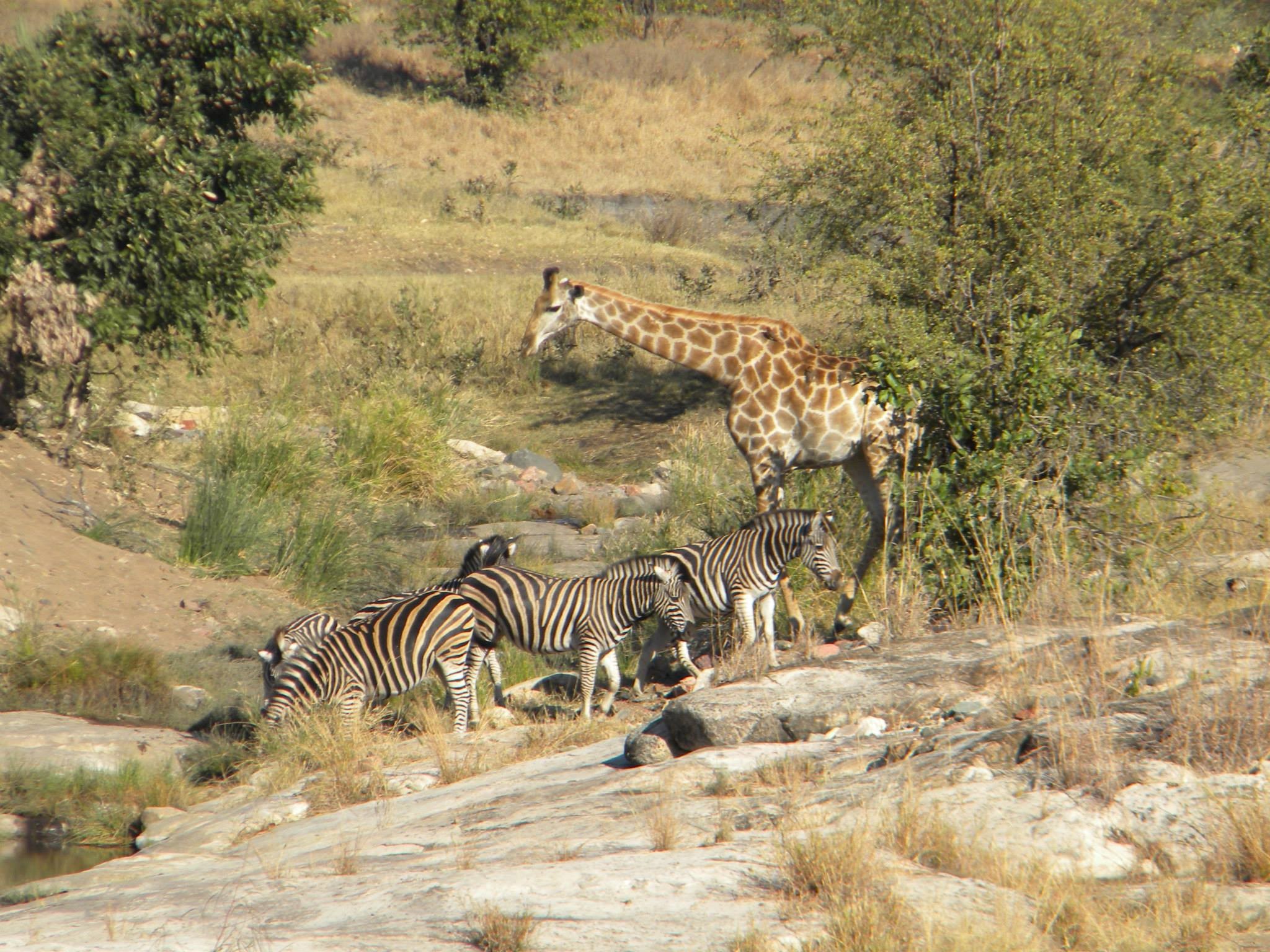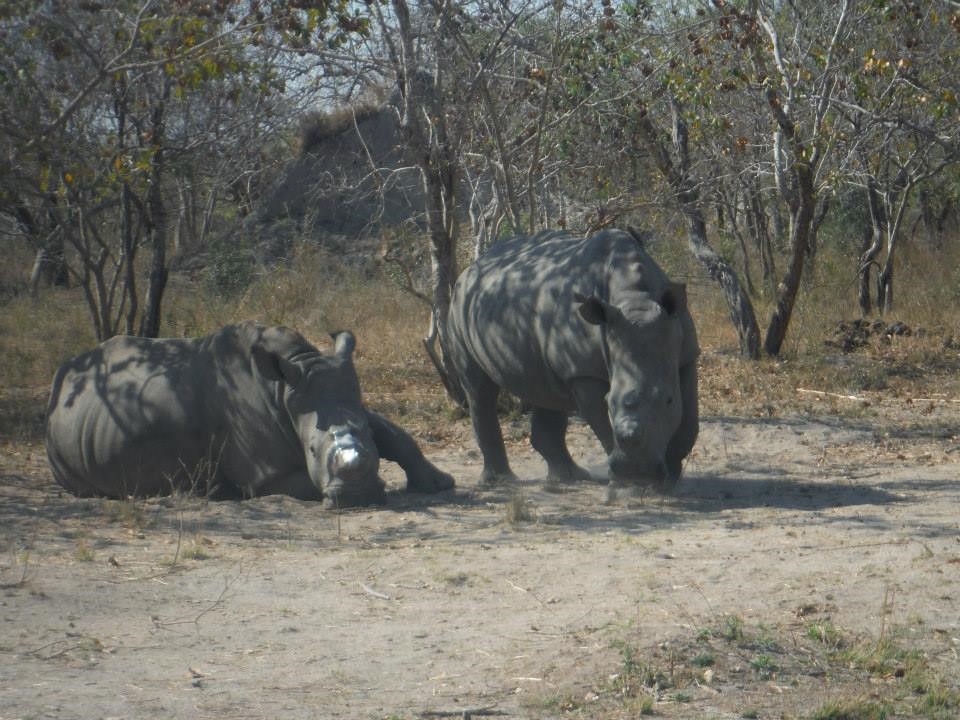An African Adventure
 Monday, February 16, 2015 at 01:00PM
Monday, February 16, 2015 at 01:00PM Breann Jolliffe - Ross
Experiences
As the wheels to the plane finally touch ground, our pilot announces overhead, “Sorry for the abrupt turn, we had to avoid some vultures. Welcome to Africa. On your left are warthogs”. At that moment, I knew this trip would be one I would never forget.
 A South African braai (barbeque) awakens our senses for our first meal.In August of 2014, a few friends and I expanded our experiences in veterinary medicine with South Africa World Vets. This team is based out of Hoedspruit, South Africa and includes a wildlife veterinarian, a small animal veterinarian, a helicopter pilot, wildlife experts, as well as their support staff. They were all welcoming, accommodating, knowledgeable, and had a passion for teaching.
A South African braai (barbeque) awakens our senses for our first meal.In August of 2014, a few friends and I expanded our experiences in veterinary medicine with South Africa World Vets. This team is based out of Hoedspruit, South Africa and includes a wildlife veterinarian, a small animal veterinarian, a helicopter pilot, wildlife experts, as well as their support staff. They were all welcoming, accommodating, knowledgeable, and had a passion for teaching.
For two weeks, we stayed in cozy lodges on a large game reserve located near the Greater Kruger National Park. Every night we gathered around a fire with a homemade dinner that was so delicious, I would go back for the food alone.
Our two-week trip lead right up to the weekend of the spring season game auction in Nelspruit, South Africa. This auction gathers farmers who are interested in buying and selling their animals for breeding purposes. The farmers keep detailed records of their animals including their birthdates, individual gestation periods, and even their lineages to prevent inbreeding. This auction puts monetary value on the livelihood of these animals and therefore additionally helps conservational efforts. Many of our experiences came from helping different farmers prepare for this event.
 This sable was sedated in order to load it onto the trailer for the auction.
This sable was sedated in order to load it onto the trailer for the auction.
Sedation and proper animal handling were used on every animal we assessed. The type of sedative and handling technique used varied with species. A few of the species we encountered were sable, impala, buffalo, nyala, eland, wild dogs and an elephant. During our encounter with each species, we learned their different habits, family orders, different reactions to medications, and the characteristics desired for those at auction.
Most of our experience came from working with the beautiful sable. These farmers put a great deal of trust into their veterinarians, as this endangered antelope species can be worth over $1 million USD. After the animal is sedated, we would assist by holding the head properly to prevent aspiration, check respiration rate and quality, and give intramuscular injections as needed. We were able to confirm a few pregnancies via ultrasonography as well. All of this was completed prior to gathering a team of 8 or more people to carry the sable in a sling to the transporting vehicle. Once loaded, the veterinarian would give the reversal.
 Giraffe and zebra coexisting in Kruger National Park The techniques used for sable differs slightly from those used for buffalo. First, a cloth is used to cover the buffalo’s eyes to protect them and to decrease the stimulus, while a sable would panic if it could not see. Some buffalo can be carried via a sling but others are too large. For these, a slight dose of butorphanol is given to reverse the sedative (etorphine) just enough to allow the buffalo to walk under sedation. Prior to giving the reversal, a rope was tied to the horns in order for a group of 5 or 6 people to guide the buffalo onto the trailer.
Giraffe and zebra coexisting in Kruger National Park The techniques used for sable differs slightly from those used for buffalo. First, a cloth is used to cover the buffalo’s eyes to protect them and to decrease the stimulus, while a sable would panic if it could not see. Some buffalo can be carried via a sling but others are too large. For these, a slight dose of butorphanol is given to reverse the sedative (etorphine) just enough to allow the buffalo to walk under sedation. Prior to giving the reversal, a rope was tied to the horns in order for a group of 5 or 6 people to guide the buffalo onto the trailer.
Seeing these different techniques first-hand helped strengthen the information learned at Ross University School of Veterinary Medicine. It was remarkable to see how the drugs worked so quickly and how this potentially chaotic process was extremely efficient under supervision of an experienced veterinarian.
In addition to helping prepare for the auction, we went on educational excursions at the Kruger National Park, Moholoholo Rehabilitation Center, and Hoedspruit Endangered Species Center. We were also called on a few appointments and emergencies that included an elephant with a lame forelimb that required a helicopter to sedate the animal from above with a dart gun, a sable that fought a porcupine and gained some quills, and a mass capture of reedbuck that were placed on a new farm.
 Due to the devastating effects from the poacher’s horn removal, the rhino on the left has a metal plate implant. Both rhinos were saved from poachers and are being cared for by the Hoedspruit Endangered Species Center.All of this was very exciting and unforgettable. But the most influential moments came in the form of learning. Learning how big game hunts balanced out and sponsored conservational efforts. Learning how breeders are increasing populations of endangered species. And most disheartening was to learn how much rhinoceros horns are worth in the black market due to their mythical effects. This high price gives people a motivation to kill those protecting the endangered species in order to inhumanely saw off a horn that usually ended in the suffering and death of that rhino.
Due to the devastating effects from the poacher’s horn removal, the rhino on the left has a metal plate implant. Both rhinos were saved from poachers and are being cared for by the Hoedspruit Endangered Species Center.All of this was very exciting and unforgettable. But the most influential moments came in the form of learning. Learning how big game hunts balanced out and sponsored conservational efforts. Learning how breeders are increasing populations of endangered species. And most disheartening was to learn how much rhinoceros horns are worth in the black market due to their mythical effects. This high price gives people a motivation to kill those protecting the endangered species in order to inhumanely saw off a horn that usually ended in the suffering and death of that rhino.
This trip gave me a one of a kind, hands-on experience in wildlife veterinary medicine. But, I am thankful for much more than that. I was introduced to a different lifestyle and culture that allowed me to further appreciate nature’s beauty and the company of friends without the distraction of “always being connected” via technology. I gained new perspectives on conservation and learned about the fragile environment of a fenced in ecosystem. But most of all, I gained a newfound appreciation for those who risk their own lives fighting for the rights of animals. Thank you, SA World Vets.
 Ross U,
Ross U,  South Africa in
South Africa in  Experiences
Experiences 